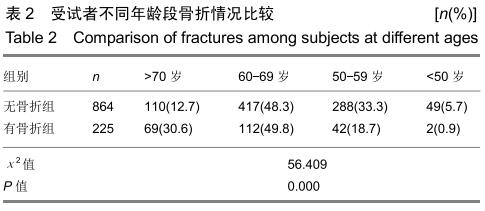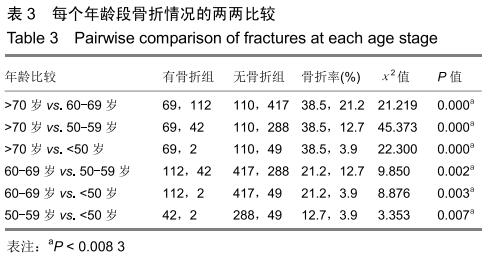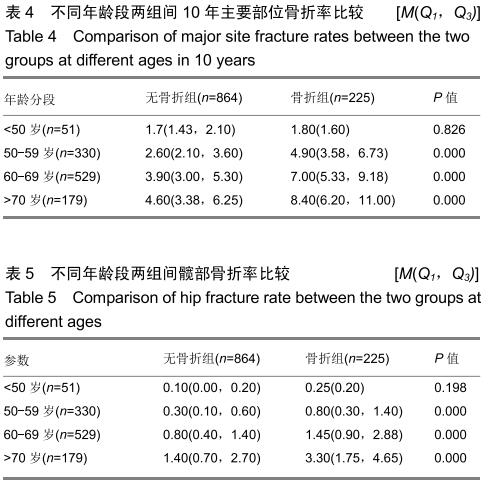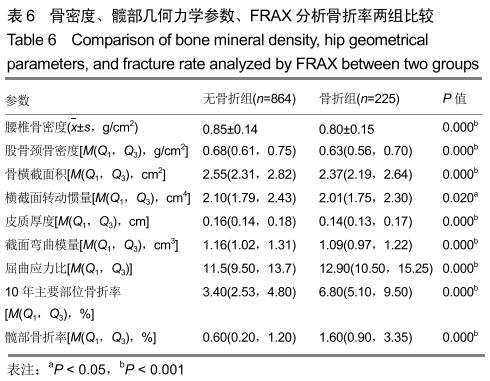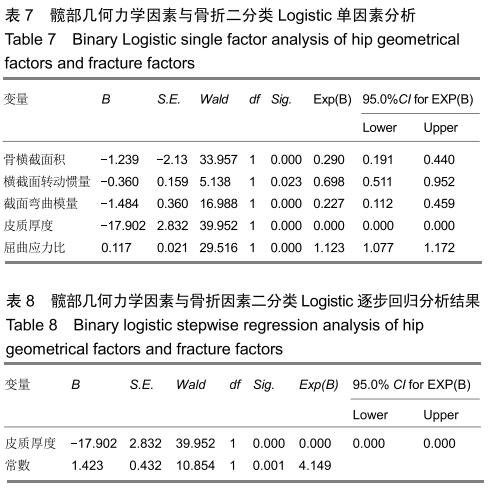|
[1] 黄敬叶.人工髋关节置换术治疗高龄髋部骨折的临床研究[D].南宁:广西医科大学,2019.
[2] PUGELY AJ, MARTIN CT, GAO Y, et al. A risk calculator for shout-term morbidity and mortalitty after hip fracture surgery.J Orthop Tranma.2014;28(2):63-69.
[3] 刘培佳,孙天胜.老年髋部骨折术后常见并发症影响因素研究进展[J].现代医药卫生,2017,33(21):3288-3291.
[4] KOSO RE, SHEETS C, RICHARDSON WJ, et al. Hip Fracture in the Elderly Patients: A Sentinel Event.Am J Hosp Palliat Care.2018;35(4):612-619.
[5] 杨洋,林向进.877例髋部骨折患者发病情况及其流行病学特征分析[J].中华流行病学杂志,2014,35(4):446-448.
[6] KANAZAWA I. Diabetes-ralated osteoporosis.Nihon Rimsho. 2015;73(10):1718-1722.
[7] 刘畅畅,尹宏,段光宇,等.老年女性髋部骨折与DXA骨强度参数的相关性研究[J].中国骨质疏松杂志,2018,24(1):83-86+90.
[8] KANIS JA, JOHANSSON H, HARVEY NC, et al. A brief history of FRAX.Arch Osteoporos.2018;13(1):118.
[9] WRIGHT NC, LOOKER AC, SAAG KG, et al. The recent prevalence of osteoporosis and low bone mass in the United States based on bone mineral density at the femoral neck or lumbar spine.J Bone Miner Res.2014;29(11):2520-2526.
[10] 胡世弟,李瑾,刘璐等.绝经后2型糖尿病患者髋部骨几何结构参数及影响因素[J].中华骨质疏松和骨矿盐疾病杂志,2015,8(1): 1674-2591.1
[11] 周晓聪. FRAX工具与髋部结构分析预测2型糖尿病患者脆性骨折风险的临床研究[D].济南:山东大学,2019.
[12] 任晓静.髋部结构分析在预测髋部脆性骨折的意义[D].福州:福建医科大学,2015.
[13] HA YC, YOO JI, YOO J, et al. Effects of Hip Structure Analysis Variables on Hip Fracture: A Propensity Score Matching Study.J Clin Med.2019;8(10):1507.
[14] 卢思琦.髋部几何学结构及社区跌倒风险评估与老年人髋部骨质疏松性骨折的关系评价[D].苏州:苏州大学,2018.
[15] KANIS JA, HARVEY NC, COOPER C, et al. A systematic review of intervention thresholds based on FRAX: a report prepared for the National Osteoporosis Guideline Group and the International Osteoporosis Foundation. Arch Osteopor. 2016; 11(1):25.
[16] HARVEY NC, ODÉN A, ORWOLL E, et al. Measures of Physical Performance and Muscle Strength as Predictors of Fracture Risk Independent of FRAX, Falls, and aBMD: A Meta-Analysis of the Osteoporotic Fractures in Men (MrOS) Study.J Bone Miner Res.2018;33(12):2150-2157.
[17] 郑玉仁,杨俊华,王国荣,等.应用FRAX工具评价莆田地区中老年骨质疏松骨折风险的临床研究[J].中国骨质疏松杂志, 2019, 25(7):920-923.
[18] 王巍,徐春雨,顾大伟,等.骨折风险预测工具在绝经后女性人群骨折风险预测中的适用性分析及效果评价[J].中国妇幼保健,2016, 31(21):4492-4494.
[19] 梁俊刚,李宝,张智海,等.FRAX软件评估北京地区中老年人骨折风险的预测价值[J].中国骨质疏松杂志,2019,25(06):762-767.
[20] 梁越飞,梁伦高,王波,等.FRAX评分在髋部骨质疏松性骨折风险中的预测价值研究[J].齐齐哈尔医学院学报, 2016,37(34): 4324-4325.
|



